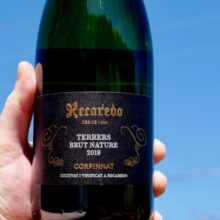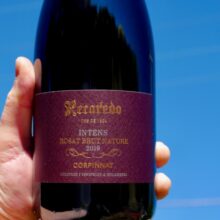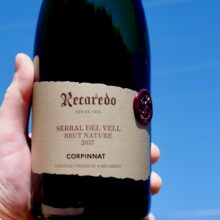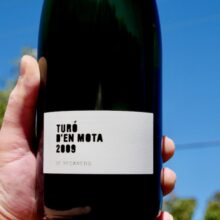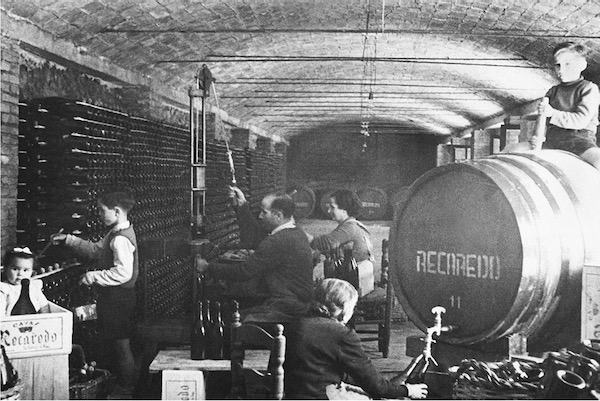
Winery
Recaredo
About Recaredo
From humble beginnings, Mata grew his holdings while forging his distinctive style, pioneering the production of brut nature sparkling wines, using oak barrels and crafting long-aged sparkling wines with the Xarel·lo grape variety. Mata’s sons continued in their father’s footsteps, and today, it is his grandson, Ton Mata, who heads up the winery.
Under Ton’s direction, Recaredo has become a worldwide reference point for sparkling wine.
Mata’s philosophy has long been about crafting wines of place rather than conforming to a particular style. For this reason, Recaredo left the sprawling Cava D.O. in 2018 to join Corpinnat, an organisation then comprising nine leading wineries in Alt Penedés. Inspired by Champagne’s Récoltant-Manipulant model, Corpinnat was established to distinguish the great sparkling wines made in the heart of Penedès, a region whose traditional-method sparkling wine history dates back to the end of the 19th century.
Corpinnat combines the words Corp – Heart with Pinnat AKA Penedés – Stones.
Corpinnat’s manifesto includes arguably the strictest guidelines overseeing any sparkling wine production in the world. This includes working with 100% organic grapes, harvesting by hand, minimum ageing requirements and vinification at the estate. Today, only 12 producers have met such rigorous obligations. Corpinnat is not an easy club to get into.
The local variety, Xarel·lo has emerged as a faithful communicator of terroir at Recaredo and a variety that ages and improves in bottle like few others. This Catalan variety started as a red grape before mutating into a white variety. Perhaps for this reason, Xarel·lo is high in antioxidant and phenolic compounds—more than some red varieties—promoting its astonishing ageing potential while lending an attractive salty-bitter sensation to the wine’s finish.
Like all the world’s greatest fizz, these are, first and foremost, fine wines. “These are more than just sparkling wines—they are long-aged white wines,” says Ton Mata. “The bubbles must allow you to see the wine; they must not hide the wine.” When tasting in the context of a meal, these wines take on another level of complexity, evolving with air and taking you on a journey. It’s not very often you come by a sparkling wine producer where the quality and character of the wines match the greatest growers in Champagne. Yet that is precisely what you get with Recaredo.
This is not to say Recaredo’s wines taste like Champagne. No, this is the Mediterranean; the grape varieties and soils are entirely different. Even so, Recaredo’s wines convey many of the virtues that draw many of us to fine grower Champagne: intensity of flavour, unique personality and sense of place. And, of course, they taste great, too.
An Afternoon with Ton Mata
Listening to Ton explore the history of the estate and their ongoing experimentation / evolution in the vineyard had me thinking of Fabrice Pouillon in Champagne. The depth of thought they put into all aspects of life and production of wine is inspiring.
Although not specifically spoken of by Ton, their approach would come under the banner of what has become known as donut economics and in design thinking parlance has shifted beyond human centred design to planet centric design. In the wine world we hear terms such as regenerative viticulture and environmental impact, thankfully many take this seriously which is good for both the quality of the wine, the people that make it, and those that consume it. Unfortunately in some cases this is mere lip service, greenwash.
Producers like Recaredo live and breath this approach. They’ll deploy the great minds of the scientific world and every toolkit in their arsenals to meet this end.
There are few wineries that have combined the approach of wild fermentation with that of isolating yeast strains, analysing their characteristics, selecting multiple optimal strains and maintaining them in laboratories for their use. Some may argue this cross a line of science over terroir. I would say it perfectly utilises the tools in our arsenal to make delicious wine respectfully, consistently and will lift the base quality of the wines made.
In the Vineyard
The vineyards lie within 25km of the cellar in Sant Sadurní d’Anoia, an area of predominantly calcareous soils dominated by the Montserrat Mountains. Xarel·lo accounts for 60% of Recaredo’s plantings, and the vines are dry-farmed, often ploughed by horse and contain many old vines dating to the 1940s and ’50s.
Plantings of the white varieties Macabeu and Parellada along with the red Monastrell and Granatxa Negra contribute to the blends.
Recaredo is a pioneer on many levels; not only was it the first producer in the Penedès region to be certified biodynamic (in 2010), but it uses exclusively estate-grown fruit, and all the grapes are picked by hand and vinified in its own cellars in Sant Sadurní d’Anoia.
Recaredo’s vineyards are amongst the most immaculate and precisely tended we have visited. All the plots, of which there are many, lie within 25km of the cellars in Sant Sadurní d’Anoia in the Corpinnat territory—an area of mainly calcareous soils and hilly Mediterranean landscapes dominated by the Montserrat Mountains. The vineyards are dry-farmed and planted only with the region’s local varieties, notably Xarel·lo, which accounts for 60% of Recaredo’s production. Draught horses plough the top vineyards, and only organic fertilisers are applied when necessary.
Yields are some of the lowest you will find in the world of sparkling wine: 40 hl/ha would not be a wild estimate over the past decade. Several recent vintages have been as much as half that! To put that number in context. DRC is often permitted to yield 40 hl/ha. Some parts of Champagne may yield as much as 160-240 hl/ha, obviously the better producer will yield much less.
This comes across as the marketing mantra of the fine wine world. Yet like all of the best vignerons of the world as you dig deeper there is much more than meets the eye.
Considering water stress in the region, Recaredo is changing the way it plants vines to help / encourage the root system to drive deep into the subsoil.
Building organic matter and planting cover crops to open deep channels allowing moisture to penetrate and supporting growth of worms, insects, fungi and bacteria to cycle nutrients and build water holding capacity.
Combining this with companion planting with Valerian, Chamomile, Nettle and Yarrow to ward of pests.
Maintaining stands of forest for the bats that eat months saving grapes from being eaten by their lavae.
The make a tea from a local water weed ‘horsetail’ that is resistant to fungi and spray it on the vineyard to combat mildews.
Like the vineyards of R.Pouillon, Agrapart, Larmandier-Bernier and Benôit-Marguet aerial photos, even google maps images show how their vineyards thrive under similar practices whilst others shut-down, desiccate and appear like a dessert.
In the Winery
All of Recaredo’s wines stem from a single vintage and are bottled without dosage. And like all the world’s great fizz, they are first and foremost wines; they come into their own at the table. “These are more than just sparkling wines—they are long-aged white wines. The bubbles must allow you to see the wine; they must not hide the wine,” says Ton Mata. When tasting in the context of a meal, Recaredo’s wines take on another level of complexity, constantly evolving with air, leading you on a journey of flavour and intricacy.
Fermentation is triggered by vineyard yeasts originally isolated in 1999, and Mata still uses a large proportion of large oak barrels for fermentation—more so in the single-vineyard and long-aged labels. Unusually for the region, secondary fermentations occur without adding cane sugar. Instead, the secondary fermentation uses grape juice from the following vintage. This results in the around 10% of the wine being from the following vintage. Aging takes place under natural cork only, a homage to the family’s tradition and the terroir-driven house style.
Importantly, the wines draw their unique character from low yields—often half the quantity allowed under the Corpinnat banner—and extended lees aging. Even the entry-level Terrers spends at least 30 months on lees, rising to 12-15 years for the top cuvée, Turó d’en Mota. All the riddling is done in-house, and the disgorgements―which take place without freezing―are done manually by a group of artisans who expel the lees. Recaredo’s practice in vineyard and cellar would not look out of place next to a very top grower Champagne outfit.
These are wines the fact they have bubbles in them adds a playful element. Recaredo bottles at a lower pressure than Champagne in general, about 10-20% less. Translating into less pressure and fizz in the bottle allowing the wine to express itself over the fizz with greater ease.
The wines have no dose simply being topped with the same wine at disgorging. The quality of fruit, balance and complexity of the wines would likely not see them benefit from any dose.
“I’m not sure if there is any other sparkling wine producer in the world who works with such strict standards.”
Luis Gutiérrez, The Wine Advocate
Where in the World is Recaredo?
Recaredo is based in Penedès, Catalunya just south of Barcelona.
The Associació de Viticultors i Elaboradors Corpinnat has produced an incredible virtual video made with 3D technology that describes in less than five minutes the territorial limits, the geographical, geological and climatic characteristics of the area and the main values of the brand. The video has been made with the collaboration of the company Guardian of wine, by Carlos Águila from the combination of five computer programs that allow to digitize the image in three dimensions and offer a realistic image of the whole territory in sight of bird. It’s available to watch on any of the Corpinnat wine pages.
